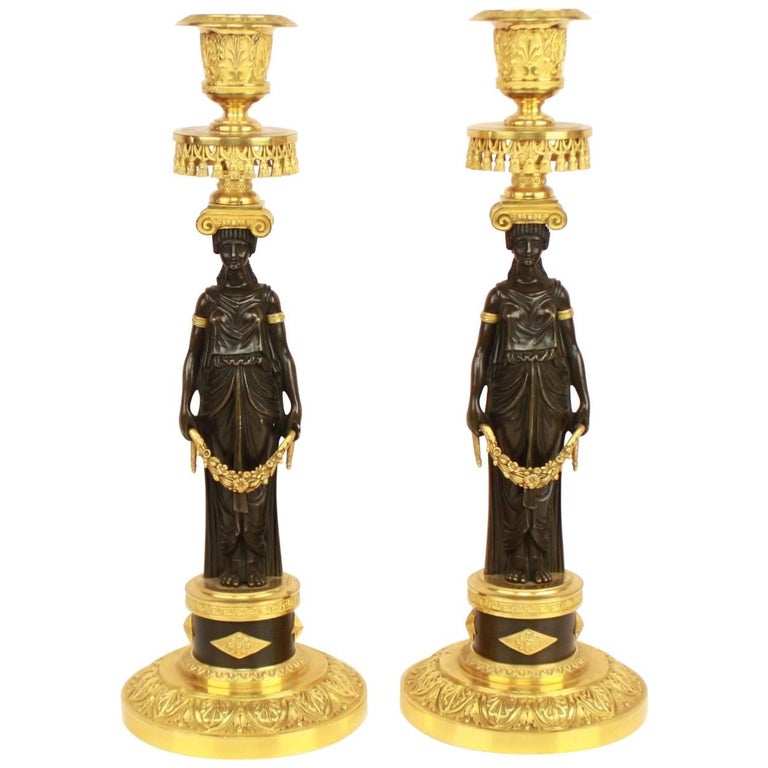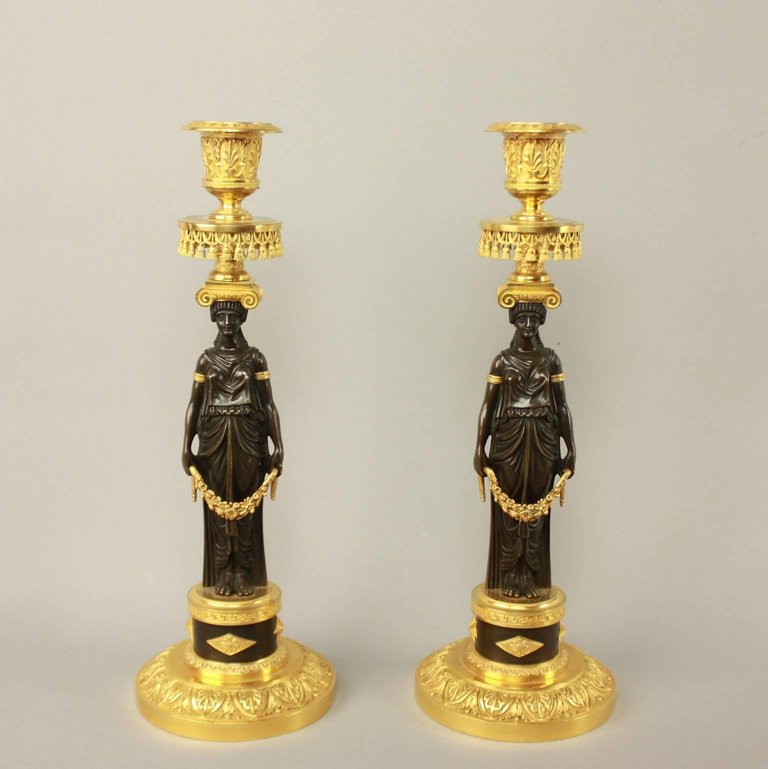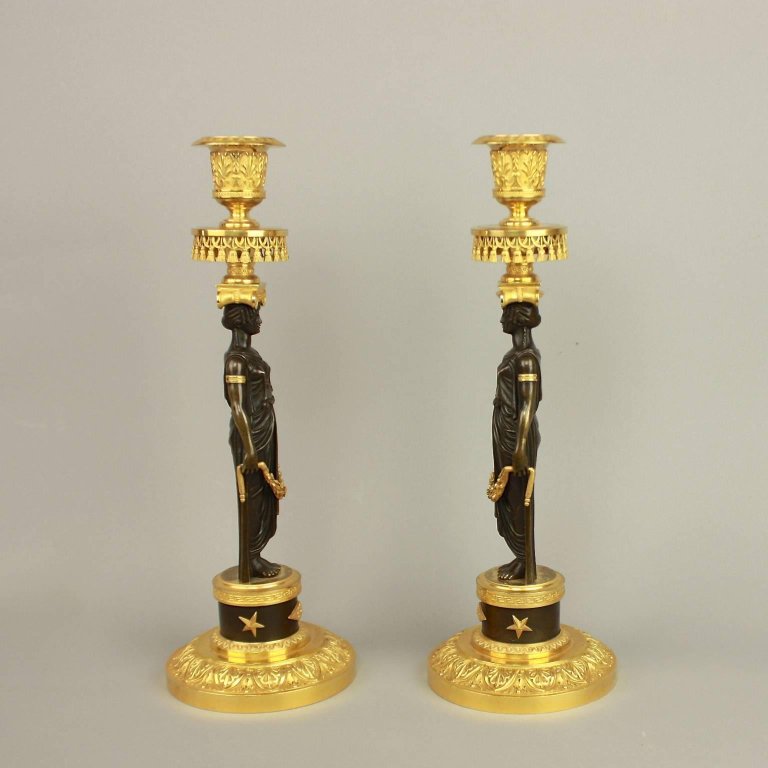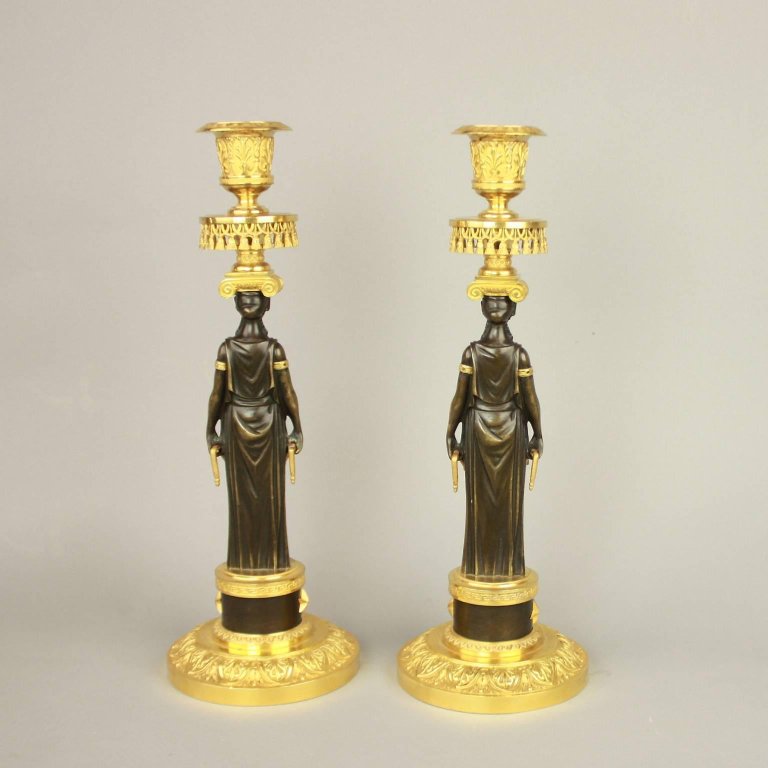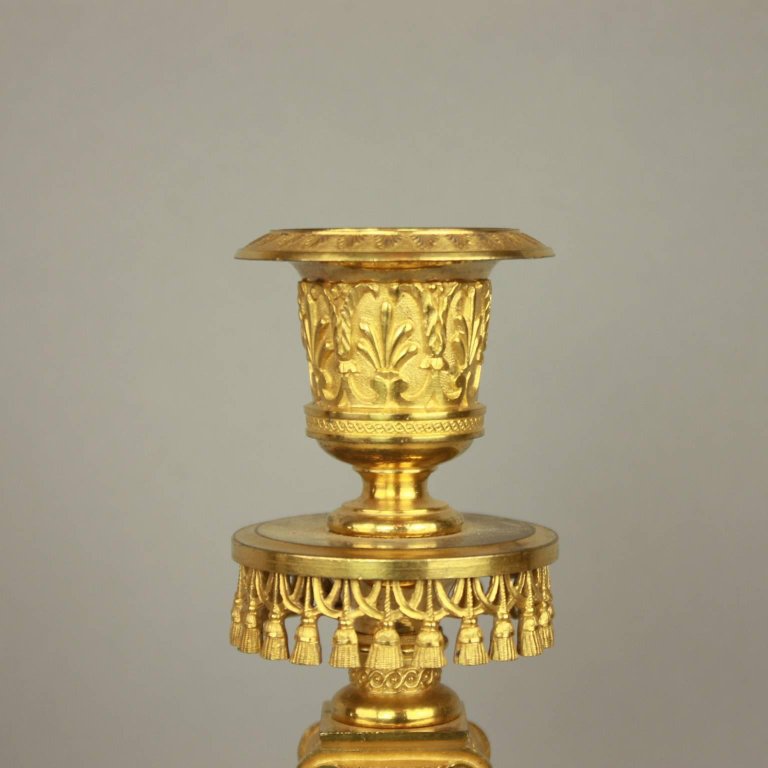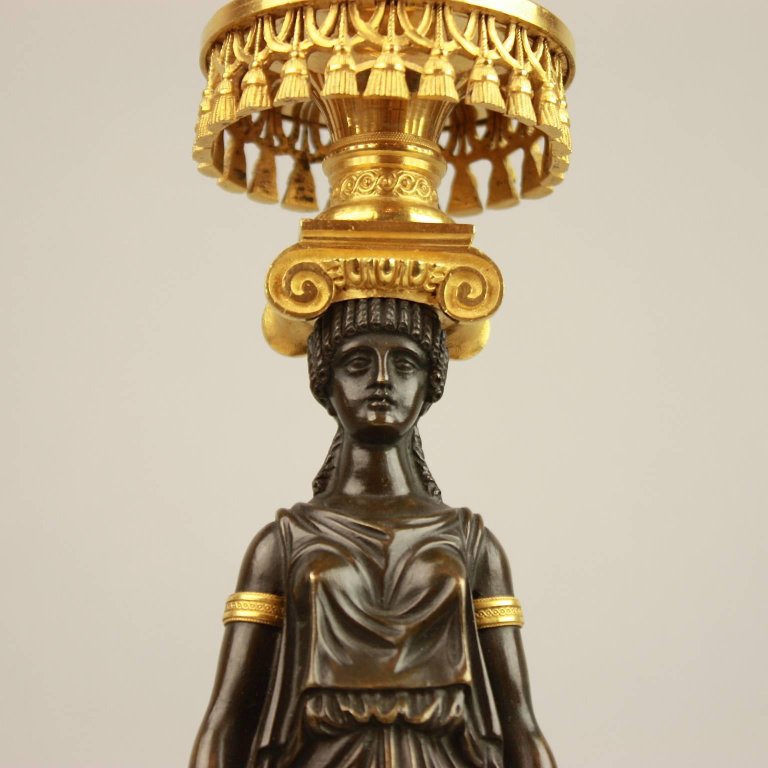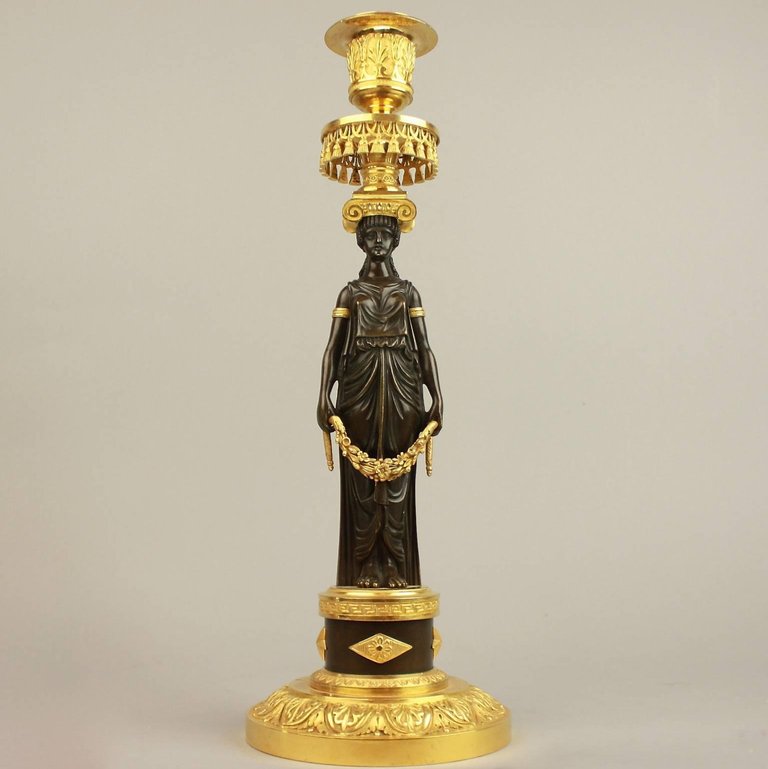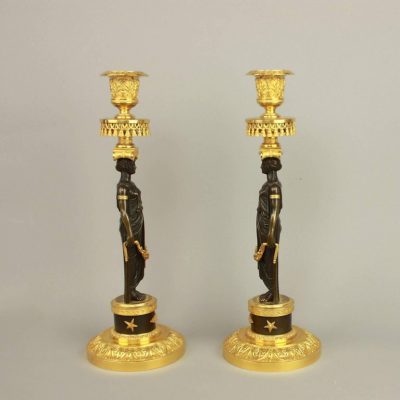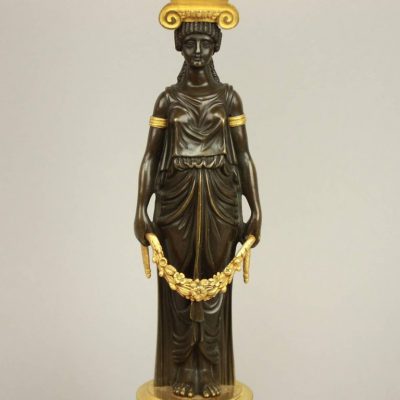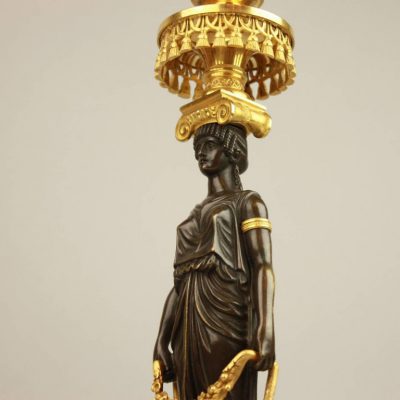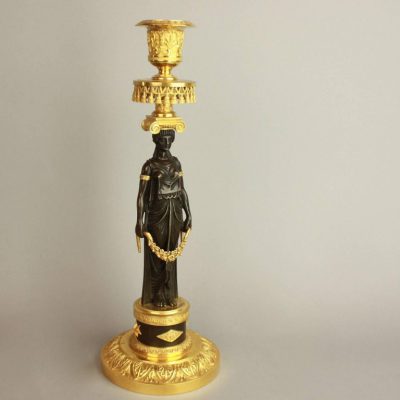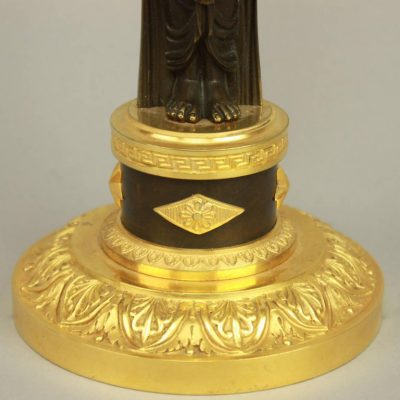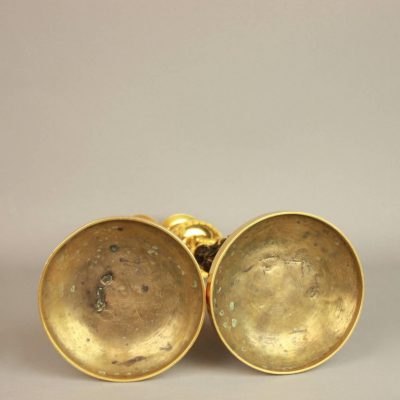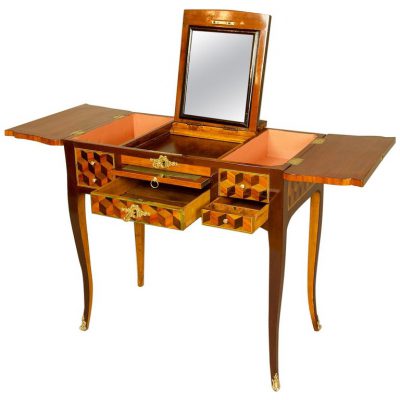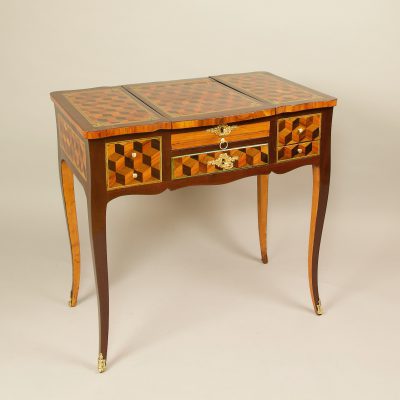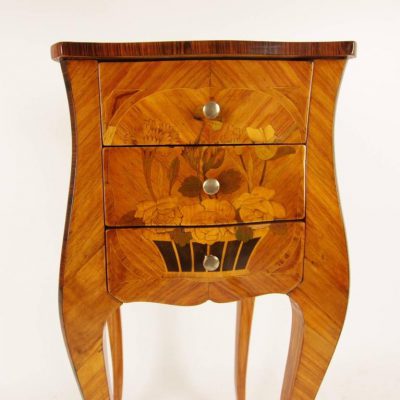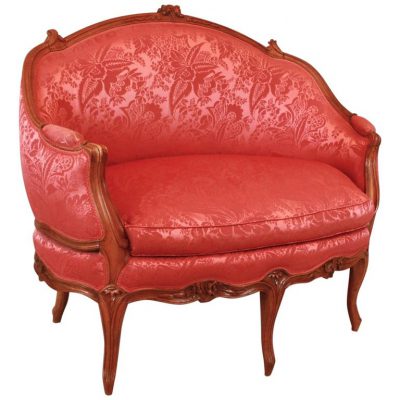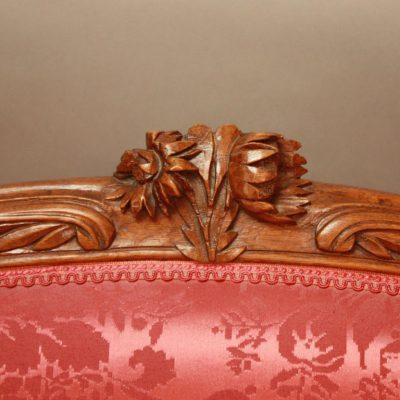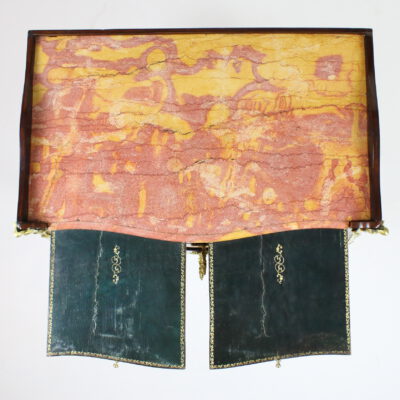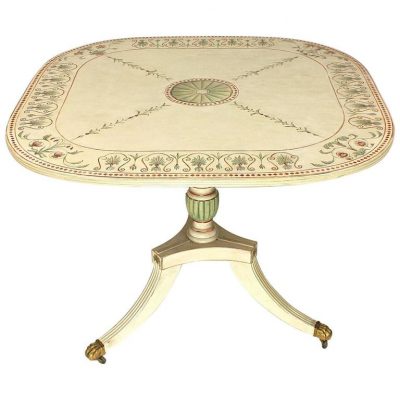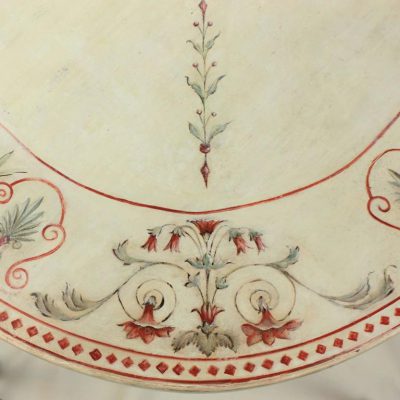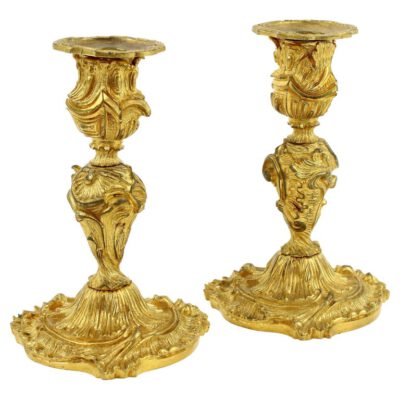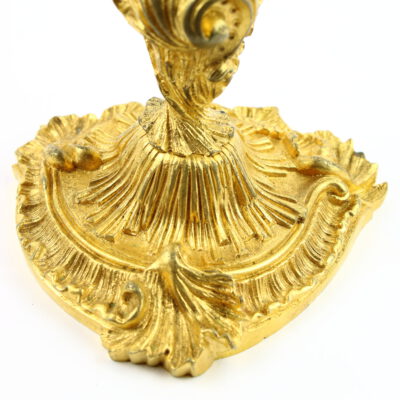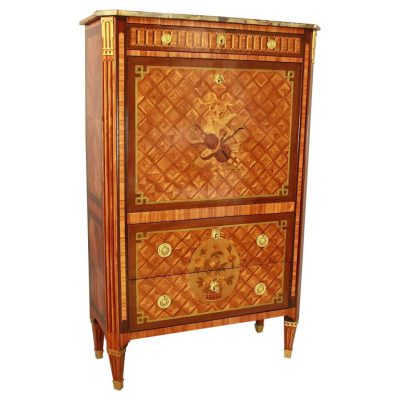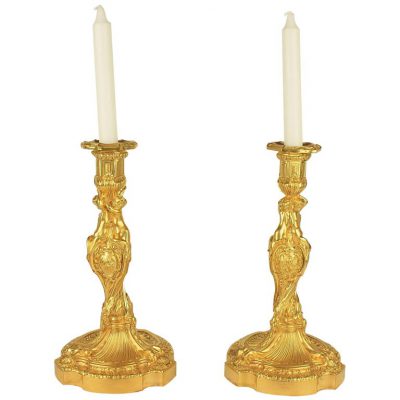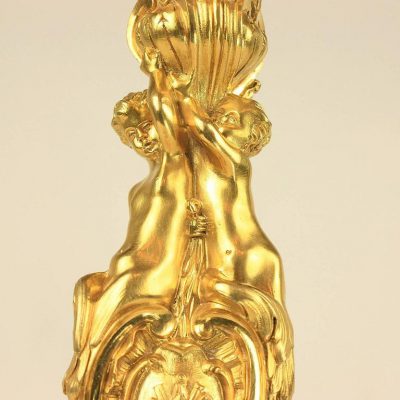Excellent pair of ormolu and patinated bronze candlesticks, each with a caryatid vestal virgin (ancient priestesses who protected the temple dedicated to the Roman goddess Vesta) or possible korai (female figures used as votive offerings to deities, mainly goddesses such as Athena and Artemis). The figures are presented in a strongly frontal manner, wearing a classical tunic over a long skirt, arm bands and are on bare feet. Between the arms they are holding a suspended flower garlands – an offering of gratitude for the goddess. Of rigid and column-like posture each figure demonstrates the archaic smile, transcending above the hardships of the world. The head supporting an ormolu ionic capital and subsequently leaf cast campana nozzles above tassled drip-pans. On black marble bases with ormolu mounts. This pair of candlesticks is of finely chased quality apparent in the finely detailed tassels, anthemion friezes and skillful draperies.
Comparable to the work and in the manner of Claude Galle (1759-1815). Claude Galle was one of the foremost bronziers of the late Louis XVI and Empire periods who having been received as a maître in 1786, gained many commissions from the Garde-Meuble de la Couronne and then enjoyed significant patronage under Emperor Napoleon. He is known to have collaborated with Pierre-Philippe Thomire (1751-1843) and was responsible for the majority of bronzes d’ameublement supplied during the Empire to Château de Fontainebleau and other palaces. The world’s finest collections exhibiting his work, i.e. Musée National de Château de Malmaison, the Musée Marmottan in Paris, the Museo de Reloges at Jerez de la Frontera, the Residenz Munich and the Victoria and Albert Museum in London.
Comparative Literature: Ottomeyer/Pröschel, Vergoldete Bronzen, München, 1986, Vol. I, p. 335, fig. 5.2.19 (similar bronze figure see drapery and physiognomy).

